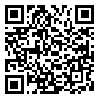Volume 23, Issue 105 (10-2013)
J Mazandaran Univ Med Sci 2013, 23(105): 71-79 |
Back to browse issues page
Download citation:
BibTeX | RIS | EndNote | Medlars | ProCite | Reference Manager | RefWorks
Send citation to:



BibTeX | RIS | EndNote | Medlars | ProCite | Reference Manager | RefWorks
Send citation to:
A comparison of the Upper Lip Bite Test with Inter Incisor Distance in predicting difficult laryngoscopy and tracheal intubation. J Mazandaran Univ Med Sci 2013; 23 (105) :71-79
URL: http://jmums.mazums.ac.ir/article-1-2764-en.html
URL: http://jmums.mazums.ac.ir/article-1-2764-en.html
Abstract: (11699 Views)
Background and purpose: Background and Aim: Difficult laryngoscopy and tracheal intubation is a major cause of morbidity and mortality during anesthesia. Its prediction is important for the anesthesiologists. Upper Lip Bite Test (ULBT) has been recently used. We aimed to evaluate ULBT, Interincisor distance (IID) and three fingers accuracy and their possible correlation to predicting difficulty in laryngoscopy and intubation.
Materials and methods: In a prospective diagnostic study, 410 patients who were scheduled for elective surgery were enrolled in the study. Before the induction of general anesthesia, the airways were assessed, and ULBT, IID and TF evaluated. The larangoscopic view according to the Cormack- Lehane grading was evaluated after anesthesia and grades 3, 4 were defined as “difficult laryngoscopy and intubation” .We used ROC analysis for the best cut-off points. Sensivity, specifity, positive predictive value (PPV), negative predictive value (NPV) and likelihood ratio of these tests were calculated
Results: The prevalence of difficult laryngoscopy was 7.1 %( n=29). CI 95 %: (0.068-0,072). The results showed that 92.9% of patients had an easy or relatively easy laryngoscopy and intubation. 6.8% (n= 28) were on the third grade of Cormack-Lehane and 0.3% (one person) on the fourth grade. Sensitivity and specificity of ULBT were significantly higher than IID an TF, (59%, 75% versus 55 %, 64%), respectively.
There is a significant difference in mean weight, age, height, BMI and TF of the patients who have or have had difficult intubation. But the IID as well as the age of the patients in both groups had significant difference (P=0.001).
Conclusion: ULBT for all the patients in the region with regard to the geography and ethnic sari and Mazandaran, is recommended. ULBT is a better test than IID and TF. Age test with a cut-off of 36 years of age for future studies are recommended
Type of Study: Research(Original) |
Subject:
anesthesia
| Rights and permissions | |
 |
This work is licensed under a Creative Commons Attribution-NonCommercial 4.0 International License. |




